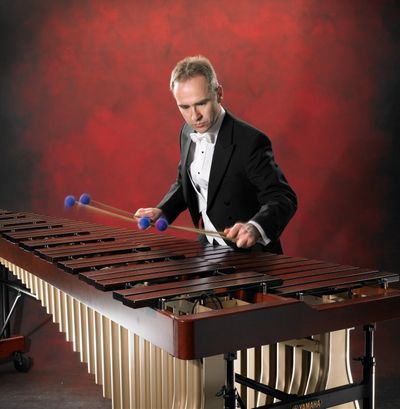Expect perfection at ‘Percussion’
Nivkovic headlines Symphony’s weekend shows

When the Spokane Symphony Orchestra, under the baton of music director Eckart Preu, performs “Percussion and Pathetique” this weekend, they will be joined by a big-name guest.
Nebojsa Zivkovic is considered one of the world’s foremost marimba and percussion soloists. He is also one of the most performed composers of percussion music with nearly 300 performances annually.
He’ll take the stage at the Martin Woldson Theater at the Fox on Saturday and Sunday to perform his own Marimba Concerto No. 2, Op. 25, as part of a bill that also includes “From Bohemia’s Meadows and Forests” by Bedrich Smetana and Symphony No. 6 in B minor, Op. 74, “Pathetique” by Pyotr Ilyich Tchaikovsky.
When asked what he would like his audience to experience and remember about his concerto, he replied: “I would like the Spokane audience to come open-minded and curious to the concert.”
He said he believes that “what we do for our instrument (marimba) is what (Niccolo) Paganini did for the violin centuries ago. He had a much easier job though; he did not fight and compete with computer games, 100 TV channels, and mass pop-culture.” Zivkovic has, in his own words, “missionary work to do.”
Although cast in the traditional three movement structure of a classical concerto, there is nothing necessarily classical about this work. For example, there are sections that include aleatoric (chance) elements which are different at each performance. There are also rhythmic figures reminiscent of Igor Stravinsky.
One traditional idea that is present in the third movement: an extensive improvised cadenza by the soloist.
Smetana’s tone-poem “From Bohemia’s Meadows and Forests” is one of six he composed and grouped under the title of “My Homeland.” The most well-known of these is “The Moldau” which traces the course of this important river.
“Meadows and Forests,” composed in 1874 when Smetana was 50, is a stroll through the Bohemian countryside where the composer experiences peasant dances, a “Hymn of Nature,” and even a chromatic Bachian fugue along the way.
Premiered only nine days before Tchaikovsky’s death, Symphony No. 6 has become one of the cornerstones of Russian symphonic music. The “Pathetique” in the title refers to the French phrase for “highly emotional” not pathetic, as in English.
Its four movements cover a large range of emotions, feelings and musical ideas that the composer wanted to express. This was a very personal work for Tchaikovsky, whose life was in torment at the time.
One of the more novel musical ideas is in the second movement; it is a waltz in 5/4 meter rather than the usual triple meter.
The finale’s closing moments has the music dying away, strand by strand, until there is nothing left but silence. This musical idea was not lost on composers such as Gustav Mahler whose Ninth Symphony ends the same way.